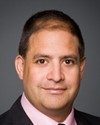Thank you, Mr. Chair.
I'd like to thank you, Mr. Goodtrack and Mr. Soonias, for attending here.
Actually, it's kind of ironic that Soonias is your last name, as it means “money” in the Cree language, and here we are talking about first nations transparency and governance, and about money, trying to be good government and trying to make first nations accountable in terms of how the money is being handled, for one.
Mr. Goodtrack, having a first nations background myself, coming from Muskeg Lake First Nation in Saskatchewan, and, too, having a background in the RCMP, I have seen the worst of the worst and I have seen the best of the best in terms of transparency and accountability. Some try but don't succeed. Others just blatantly reject all notions of being transparent and being accountable.
I find that very frustrating, with today's technology. For instance, in my first nation community of Muskeg Lake, they do their yearly report on their band website. They take added measures to have a meeting on their first nation community with their band membership. I live off reserve, and I don't have access. But they also try to make arrangements to meet with individuals in Saskatoon, Edmonton, and Prince Albert to tell them what is going on with the financial aspect of the day-to-day business on the first nation lands and the money spent.
I understand that the Aboriginal Financial Officers Association started back in 1999. You currently have 1,500 members, with 136 aboriginal certified financial managers. But there are 633 first nations out there. It's a tough void to fill and to get the proper training, for one.
I was reading an article from the Globe and Mail, going back to February 26, 2012, where it quotes you as saying that your members were fine with Bill C-27, the First Nations Financial Transparency Act. It quotes you further:
“We're all for that,” he said. “We believe in accountability.”
I agree with that sentiment, but you look at issues, and....
I've had to investigate first nations reserves. It's not fun, for one, trying to understand the practices and the.... I'm not an auditor. I'm not a profound...to say I'm good at it, but to look at financial audits....
But I look at an incident in the interior of British Columbia back in 2004, 2009, with the Anahim First Nation. Over five years, an amount of $284,000 in wages and bonuses and contract fees was spent by the chief; $111,000 was spent on wage reimbursements for travel, some without proper documentation; $28,000 was paid to relatives of the chief; $21,000 was used in band funds for the chief and council to purchase vehicles; and $10,000 in rental fees was paid back for the rental of the vehicles that the band purchased, back to the council.
This is where I'm coming from. You mentioned, and it was already mentioned by Mr. Seeback, that you have first nations individuals coming forward asking for the information that the chief and council have refused to release. They try; they go through the access to information and privacy acts. But under section 10 of the Indian Act, they have to release their identity.
They're afraid for their well-being, for their safety, because of reprisals—such as for homes—or repercussions through other measures—such as for potential jobs—or their family could be punished, or there could be physical challenges to their safety.
I look at this and I.... It's confusing. This is a very, very sensitive issue where, yes, your testimony here today could hopefully add some insight.
In what ways, if any, might Bill C-27 modify existing first nations accountability relationships?
Hopefully, I can get some clarification on that.

